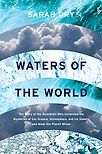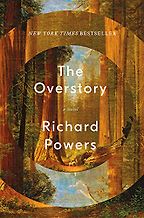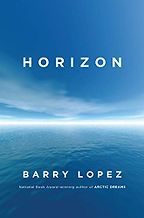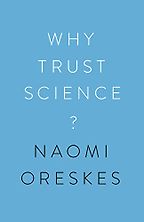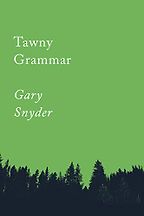It’s been a great year for climate change activism—has 2019 also been a good year for climate books?
There’s a crest of enthusiasm and awareness building, which is very exciting. Hopefully, what’s happened this year will inspire writers to experiment with new ways of engaging with climate change, that speak to the energy that things like Extinction Rebellion have managed to tap into. But it’s too soon yet to see what form those will take. The books I’ve chosen have been in the pipeline for a while, so they’re not necessarily responding directly to what’s happened in the past year. That was deliberate on my part. I’m interested in books that take a longer view.
What were your criteria as you were putting together your list of the best climate books of 2019? Were you trying to include different genres?
Definitely. For me as a writer, form is critical. What are the forms in which we can engage people about the really complex and often divisive issue of climate science and climate change? I’ve chosen a novel, a collection of two essays by a poet, a history of Greenland, a memoir and the published version of an academic lecture series. Each of these books offers different possibilities for engaging readers. If there’s one aspect of all of these books that’s crucial, it’s empathy: how these writers demonstrate their own empathy, and how they encourage readers to consider the value of empathy. And I think that goes beyond the ‘we’re in a climate emergency’ language of the news cycle to something much deeper. It’s hard, if not impossible, to maintain a response to climate change on an emergency footing. As urgently as we need to respond as a society and as great the climate challenges we face, we need to find ways to make long-lasting commitments. For that, I don’t know if the language of emergency serves us particularly well.
On that note, let’s turn to the books. Do you want to start by telling me about the novel, The Overstory by Richard Powers? It’s eliciting empathy, but it’s probably best we don’t say for what.
Yes, this novel is a bit like a blockbuster movie where you don’t want to know what’s going to happen. This probably should have a spoiler alert. It wasn’t spoiled for me, because I hadn’t read about it beforehand. So I had the experience of having the revelation that the author clearly hoped a reader would have, which is that what appears to be a book about distinct individuals—almost a book of short stories— turns out to be something more complex, in which all the characters are linked through time and space. And the real payoff is that the lives of people in this story are used metaphorically to explore something surprising and fascinating, which is that living trees are not distinct individuals, but exist in an ecosystem in which they communicate directly with each other.
That sounds a bit airy-fairy, but he’s actually drawing on interesting empirical research. One of his main characters, Patricia Westerford, is a scientist whose work on the chemical signalling that trees do via their roots is based on that of two real scientists, Diana Beresford-Kroeger and Suzanne Simard.
Going back to this question of form, the important thing is that Powers pulls it off. You could come up with a clever, academic exercise of how to write a novel that ‘speaks for the trees’ that would be a disaster to read. Power’s skill as a writer was good enough to carry me along. For me, the revelatory part of it was important because I didn’t see it coming. Then, when it did come, it had earned its power, through the cumulative force of the individual stories. I didn’t find them all equally compelling, but, for the most part, they were compelling enough that I suspended any disbelief and trusted in the narrative. There’s something quite activist in the writing. Powers is making quite an explicit case for caring about nature. I admire it because it’s a high-stakes game. When it’s done in a heavy-handed way, it can feel very sentimental and maudlin, but for me, this novel worked.
Let’s move on to the memoir you’ve chosen. This is the autobiography of Barry Lopez, Horizon. He’s an author who’s caught my attention, because one of his books, Arctic Dreams, is always being recommended on Five Books.
Arctic Dreams is a really seminal book that was published back in 1986. I remember reading it and feeling very moved by his writing. It evoked the austerity of the Far North in a way that was also quite lush, if that doesn’t sound too contradictory. Both Arctic Dreams and Horizon are really long. Lopez gives himself room to spool out ideas in prose that’s just exquisite, but also engaging. Part of his project is to show that the spaces we think of as being empty, such as the icy vast expanses at the poles, are full—not only of nature but also of culture.
This book is the culmination of a lifetime of travel, not just to the polar extremes but all over the world. It takes the form of a series of layered reminiscences and retellings. Meaning emerges in recollection and in revisiting. Part of what Lopez wants to say is that we can never come to the end of our knowledge of a place, no matter how often we revisit it. But the implication is also that we can know some places better over time, through the wisdom of accumulated experience.
Is it written in the third person?
It starts in the third person, but that’s a narrative device. He’s playing with questions like, how do we get close to things, how do we get perspective, and, what can we ever really know? He starts off with a vignette from his own youth. Then the book becomes a first-person memoir, but there’s no strict chronological order. Lopez jumps around in time and place. He’s trying to create the sense, I think, that progress is illusory, that the only way we can approach truth or wisdom is circular or cyclical.
In similar terms that Powers eventually allows himself to get to, Lopez engages quite directly with the question of how we are going to steward the planet. What are the answers to the insults that we’ve visited on the planet? He asks, “What act of imagination will it finally require for us to be able to speak meaningfully with one another about our cultural fate and about our shared biological fate?”
“What are the answers to the insults that we’ve visited on the planet?”
What I like about the book is that it refuses to separate the natural and the social or, as he puts it here, the biological and the cultural. He shows that places we think of as wildernesses are homes for indigenous people from whom we need to learn essential things. The book is really a series of meditations on how can we learn from each other, and from the people whom we haven’t been willing to listen to in the past.
Whereabouts does he go?
He goes all over the place. He goes to the Canadian Arctic, off the coast of Greenland. He goes to the Antarctic. He spends time on Cape Foulweather, the point on the Oregon coast where Captain Cook made his first landfall on the northwest coast of what was then New Albion. He spends time in Australia, in the outback; in Kenya; the Galapagos. You get the sense of a man who’s quite well connected and has this insatiable desire for travel. But it’s a kind of travel that’s very thoughtful. He wants to go to places and listen. That means listening for the echoes of the past as well as the contemporary concerns of the people who live there.
He does this all in the mode of landscape writing, but what’s really interesting about him is that he manages to save it from just being a purely aesthetic appreciation of the land. Instead, it’s infused with the question of the moral and ethical implications of our relationships with other people on the planet and even relationships with people in the past and in the future.
Those are the kinds of things that we haven’t found a language for, politically, and that’s why a writer like Lopez is so helpful because he can make explicit the question of, ‘How can we think about our obligations to the future?’ And write that down in a way that you can return to and re-consider from a new perspective.
It’s a really long book, so it takes time to read. That in itself is a form of disciplined engagement. We should be taking more time to think about these things. It’s a book to savour. It’s not a book to rush.
We’re now at book number three in your list of the best climate books of 2019. Let’s talk about Why Trust Science? by Harvard historian of science, Naomi Oreskes. The book is based on her Tanner Lectures. Tell me why it’s on your list.
You’ve asked me to choose the best books of 2019. I’d say this is more an important book of 2019. It’s important to engage with. I don’t agree with everything that Oreskes is saying, but she’s definitely worth reading and considering. She has become an important figure in climate activism, and because she’s also a historian of science, I am especially interested in what she has to say about the role that history of science can play in this pressing contemporary question of what the proper status of science in society should be.
Back in 2010 she co-wrote a book with Erik Conway called Merchants of Doubt. That book demonstrated how various conservative scientists and corporate PR agents deliberately tried to sow doubt about the dangers of tobacco smoke, acid rain and global warming (among other things). Oreskes sees this book, Why Trust Science? as a companion to that. Essentially, why we should mistrust climate deniers is that first book, and then this book is trying to provide a justification for why, on the other hand, we should trust science.
Going back to the question of form, this is an admirably clearly written book, but it doesn’t engage the empathy muscles that the other books do. In that sense, I think it will only probably be effective among a smaller subset of people, those who are more conditioned to read a book based on a series of academic lectures.
In terms of content, what she’s saying is that there are two reasons we should trust science. One is that scientists study the natural world. The natural world is there to be studied and that’s what scientists do. So, in the same sense that a plumber fixes your plumbing and thinks about plumbing, a scientist thinks about nature and observes nature and, on that basis, can tell us something about nature.
“In the same sense that a plumber thinks about plumbing, a scientist thinks about nature”
That’s quite an old way of thinking about the trustworthiness of science, but Oreskes adds a novel twist—novel to the philosophy of science in the 20th century, that is—which is that it is the social character of science that provides a warrant for its trustworthiness. The fact that science is a collective activity that depends on open debate and criticism, and relies on tools like peer review and conferences and workshops where differences of opinion are aired, means that it gives us not exactly truth, but our greatest likelihood of truth.
One of her key points is that the more diverse our scientific communities are, the more likely they’ll arrive at something closer to truth, because it’s less likely that members of that group will share the same implicit assumptions. The diversity of viewpoints in science that she’s advocating for is largely based on things that are visible, like race and gender.
It’s certainly the case that we need more women and more people of different races, religions, classes, et cetera, in science, but I would say that that, in itself, is not sufficient to guard against the risks of unquestioned assumptions. If we rely solely on the visible identity of members, then we risk missing other kinds of implicit assumptions. Which is to say, I guess…
That you don’t 100 per cent agree with her?
No, I don’t. A big part of her emphasis of the value of science as a collective activity is that it produces consensus. Consensus is made by experts who have studied a long time to be good at what they do and are judged to be that way by their peers. But I think consensus can be a source of problems within science as well as strength.
This book is written in the context of the climate change crisis, where much emphasis has been placed, by the Intergovernmental Panel on Climate Change, for example, on the fact there is a scientific consensus and therefore we should act, so I think that explains her approach, but that is also a weakness. It sidesteps the issue, which is that even the existence of scientific consensus hasn’t been enough to motivate societal action. To be clear, and fair to Oreskes, that is not her stated aim in this book. She would agree that opposition to climate science is about values that are larger than, and will not be resolved within, the framework of science but she has nevertheless chosen to focus on the content of science, and the trustworthiness of scientific consensus in this book.
Five Books interviews are expensive to produce. If you're enjoying this interview, please support us by donating a small amount.
The commitment to the power of consensus also makes it harder to admit the risks of consensus, which is that if people are less likely to feel comfortable expressing opinions at the edge of current beliefs, you miss out on important outlying evidence or opinions and this is damaging to the process of science. So there’s a tension there between the diversity of views that you want in science and the consensus output that you’re seeking. So we can see how this book is motivated by the moment in which we find ourselves. Oreskes clearly feels that the stakes are high enough that she wants to pin her colours to the mast of consensus.
The book also comes with some criticisms, from a couple of climate experts, a political scientist, a philosopher, a historian of science. Did you find those helpful?
They’re helpful in that they provide an example of the positive self-criticizing aspect of scientific enquiry. They force her to deepen or extend the argument. In the book, Oreskes also uses examples from the history of science to demonstrate how science is self-correcting in certain ways.
There have been big mistakes in the scientific consensus, but those have then subsequently been corrected?
She actually argues that they weren’t really examples of proper consensus. But this raises another problem, which is who gets to determine who counts as expert, and what counts as consensus? Though Oreskes points to the ways in which the markers of expert status, such as institutional affiliation and peer-review, are visible to non-experts, much as we would like to, you can never really finish the argument in that way. It’s always about values, which institutions and which processes we trust. Oreskes certainly understands the importance of values. She encourages scientists to be more open about their values, on the understanding that we share more values in common than we realize—even with those who seemingly disagree with us about things like climate change. She mentions the Ten Commandments as part of this seeking for more universal values—though the Ten Commandments are, of course, far from universal.
The thing about values is that it’s not enough to say what your values are, it’s about showing what they are. That’s what a novel allows you to do, that’s what the interiority of a novel or a memoir allows you to do, which a lecture doesn’t. So I think that’s why an academic lecture will only convince those who are willing to think with you in analytic terms.
As a non-scientist, I find it interesting: science being under scrutiny. It makes me think more about what science actually is, which is not normally something I think about.
That’s a really good point, actually, that the book is inviting its readers to engage with, and think deeply about, the nature of science. That is a really useful intervention on Oreskes’ part: to open up the process of what science actually is. It’s not some mystical thing. It’s done by people like you and me who are fully committed and passionate, for the most part, about what they do. That commitment doesn’t undermine the status of the knowledge that they make. In fact, it shores it up.
I love the fact you’d written a book about Marie Curie: I’m always fascinated how she achieved what she did when everything was stacked against her.
She was very determined and in that sense sui generis. She’s often held up as a role model for young women and girls, but she was extraordinary and I think we need to make progress to the point where girls and women don’t need to be extraordinary to get to the same place as ordinary men. She was clearly brilliant, but the other thing about Marie Curie is that she was only able to achieve what she did in terms of her status because her husband met an untimely end. He was run over by a horse and carriage and she was therefore able to take over his post at the university. So her life was still very much circumscribed by the constraints of her time and even her accomplishments were only possible because of anomalous circumstance. Hopefully we’re a bit beyond that now.
Let’s talk about the next book on your list of best climate books of 2019, which is The Ice at the End of the World by journalist Jon Gertner. The subtitle is ‘An epic journey into Greenland’s buried past and our perilous future.’
I find Greenland fascinating. That’s really what drew me to the book initially, because I have written about a scientist named Willi Dansgaard, who worked with ice cores that were extracted from Greenland in the 20th century. That story is included in Gertner’s book.
This book is a history of both the exploration of Greenland, starting in the 18th and 19th centuries, and then it becomes, from the mid-20th century onwards, a story of scientific investigation in Greenland. By the post-war period, the great heroic feats that were once needed to penetrate Greenland have been replaced by the relative ease of travel via airplanes and helicopters and ice tractors. As a result, you get a different kind of—I wouldn’t necessarily want to say heroism—a different kind of concern guiding engagement with Greenland, which is that Greenland can teach us things about our global climate that we desperately need to know.
“Gertner shows how hard-earned our knowledge of climate is—and therefore how robust”
One of the things that Gertner does really well is show how hard-earned our knowledge of climate is and therefore how robust. He does this not by telling but by showing in engaging prose that there’s a long history to the knowledge that we have about ice and climate from Greenland, and, importantly, how that history is linked with the histories of the people living in Greenland.
So our knowledge is hard-earned and therefore trustworthy in a similar sense to the vision of science that Oreskes is arguing for, i.e. that it is done by groups of people. In the early period, Gertner does focus on key, heroic individuals (and the book is illustrated with some wonderful photographs of very handsome explorers in full fur regalia). But later he describes the shift to more collective undertakings. In this way, Gertner ultimately provides a different kind of collective history of knowledge-generation, where the collectivity spans hundreds of years.
He starts with a maxim at the beginning—“Ice is time solidified.”—and says that ice scientists are detectives at heart. Can you explain a bit about what scientists are doing there as they investigate that ice?
In the 1950s, Willi Dangaard realized that old ice in Greenland could be used to generate a record of past temperatures. It was an almost magical insight. Dansgaard recognized that oxygen has different isotopic variants that weigh different amounts and that their weight determines what ratio of them is present at a given temperature. Using this knowledge, he realized that it was possible to infer what temperature it was when a particular bit of snow was falling in the past. And because there is a two-mile thick ice sheet sitting on top of Greenland, consisting of snow that has never melted for hundreds of thousands of years, you can use that to generate a record of past temperatures stretching back for an incredibly long time. In Antarctica, they can go back several million years, but the first ice cores that were drilled in Greenland came up with 100,000 year records of past climate.
Five Books interviews are expensive to produce. If you're enjoying this interview, please support us by donating a small amount.
Gertner tells the story of the drilling. It happened initially at a secret sub-ice encampment called Camp Century that was built by the US military in Greenland when they thought it would be an important staging place in case of World War III. The military initially just wanted to understand the physics of ice and snow. For example: could you build a railway under the ice? How about a nuclear reactor? Turns out the answer is no, because the pressure collapses it incredibly quickly. While they were at Camp Century, the military drilled an initial core to investigate the way the ice behaved under pressure. That core was later obtained by Dansgaard, to do the isotopic research that showed that you could reconstruct past temperature with incredibly fine resolutions.
The really stunning revelation was the degree of past climatic variability that the ice revealed. It revealed that the earth’s climate had the potential to change incredibly rapidly, much more rapidly than anyone had ever thought—even by ten degrees within human lifetimes. That discovery happened in the late 1960s and -70s, as did evidence about the effect rising amounts of carbon dioxide in the atmosphere was going to have on warming. So it was very important in the development of our understanding that, a) humans have dramatically altering the composition of important greenhouse gases, and, b) the earth’s climate system is not this stable beast that you can keep poking without it waking up. It’s actually liable to very rapid and violent change.
So is our knowledge of temperature over the last 100,000 years all from ice?
There are other physical traces that also generate this kind of data, with differing degrees of resolution. You can extract similar information from mud at the bottom of the ocean, from sediment that’s been accumulating for millions of years. Stalactites also contain evidence of past, not just temperatures but also climate. There are ways to recapture the numbers of hurricanes, for example. Tree rings can provide very detailed annual records of past conditions, though not on the same time scales. That was one of the first methods that scientists used. Putting all these techniques together has yielded remarkable insights into the past climate of the Earth.
Gertner tells us the slice of that story that that is linked to Greenland. By focusing on Greenland, he’s doing a little bit of what I think Lopez and Powers are also enjoining us to do, which is to pay attention to place. Individual places matter. Greenland’s been really important in helping us understand the global climate, but Greenland is also a specific location with a specific set of histories and cultures and experiences of those who have gone there, which has shaped the way our understanding has emerged. By using first-person perspective, Gertner places himself in that narrative, not in a heroic vein but in a personal one. He’s made many trips to the island in the course of writing this book and reporting on it. In that way, he demonstrates the power of a place to influence a person and how that again is essential to generating knowledge.
That relationship between an individual and a place often gets completely erased in our conversations about climate change and global warming. We talk about a single number, how the Earth is going to warm by two, three, four, five degrees. That averaging over the globe is very hard to engage with as an individual. What does it even mean? That’s part of the reason these histories are so important, for those of us who can’t go and visit these places, to help us understand the empirical basis of the knowledge that we have and also the biographical or autobiographical basis of that knowledge.
I spoke to someone who’d written a book about the Vikings a few years ago. In her book there were photos of Greenland, and I’ve been wanting to go ever since.
It is an amazing place. In a way, Gertner’s book is a testament to the history of obsession that surrounds Greenland.
We’re onto the fifth book from your selection of the best climate books of 2019. This is two essays by Pulitzer prize-winning poet, Gary Snyder. Tell me more about Tawny Grammar: Essays and why you’ve chosen this book.
Gary Snyder, still going strong at age 89, is often referred to as a member of the Beat Generation, which he was, but his work transcends that association. He’s had a long engagement with Zen Buddhism as well as with the natural world, what he might call ‘the wild.’
It’s a little bit perverse of me to include this little pamphlet of two essays in a roundup of the best books of 2019, because they were first published in 1990, but I guess wanted to make the point that we can learn new things from old writings. It’s my way of pushing back a little against the news cycle. Clearly the publisher thought it was worth doing as well!
“How can we be at home with nature? How can we find ways to stop harming nature and live with it?”
Snyder is best known as a poet, but he’s a powerful essayist as well. These two essays are irreducible in a way that reminds me of poetry: you can’t extract a simple message from them. He manages to do that with what’s—I don’t want to say simple prose in the sense of simplistic—but it’s not overly poetic. Somehow he manages to combine quite impressionistic accounts of his visits to the Far North, for example, with descriptions of Indian dances and his memories of his own childhood. It coheres without immediately giving you a simple answer to the overarching question, which is, ‘How can we be at home with nature? How can we find ways to stop harming nature and live with it?”
He has this line: “Philosophy is a place-based exercise.” He’s again making the case that we need to think in place. There’s a kind of travel memoir in these short essays that look similar to Lopez’s much longer work. He links memories of his first dance with a girl—this really visceral memory of what it felt like to hold a woman’s body for the first time, on the edge of adolescence—with traditional dances of other cultures. He’s trying to use his own experience to leap across time and culture to make deeper connections.
And I think what Snyder does really well is demonstrate what it is to be humble in the face of other forms of knowing, without being self-dramatizing in that search. The title of the book and of one of the essays is ‘Tawny Grammar.’ It’s a beautiful phrase. It comes from Henry David Thoreau, who cites a Spanish term for what he calls wild and dusky knowledge, which is ‘grammatica parda.’ Thoreau refers to nature as a mother leopard from whom we humans have been weaned too early. As a result, we’ve lost the tawny grammar that was ours by birthright. It’s a powerful image of a shared heritage, not just among peoples, but among all natural beings, that somehow is still within us and recoverable if only we attend to it.
Five Books aims to keep its book recommendations and interviews up to date. If you are the interviewee and would like to update your choice of books (or even just what you say about them) please email us at [email protected]

